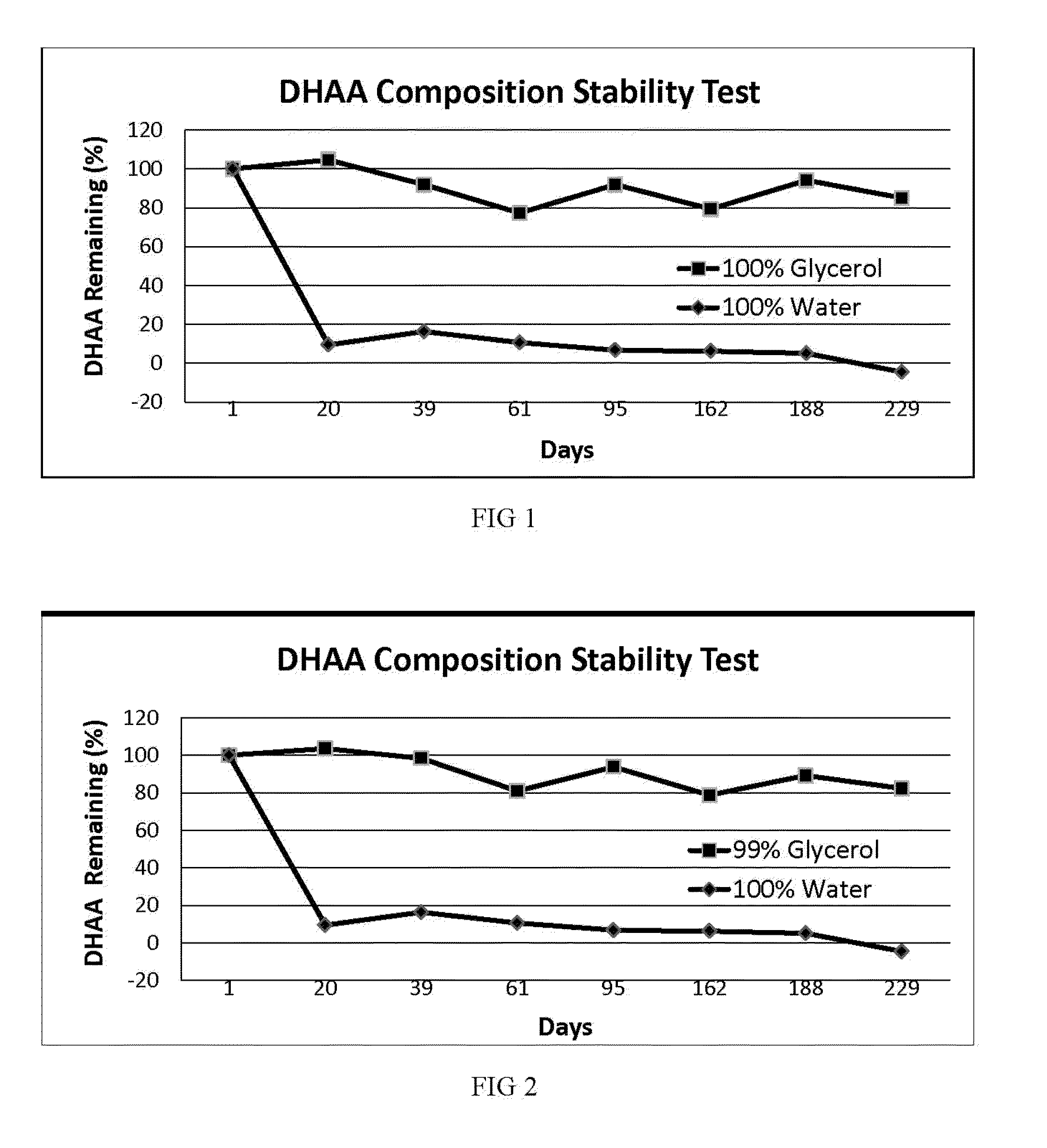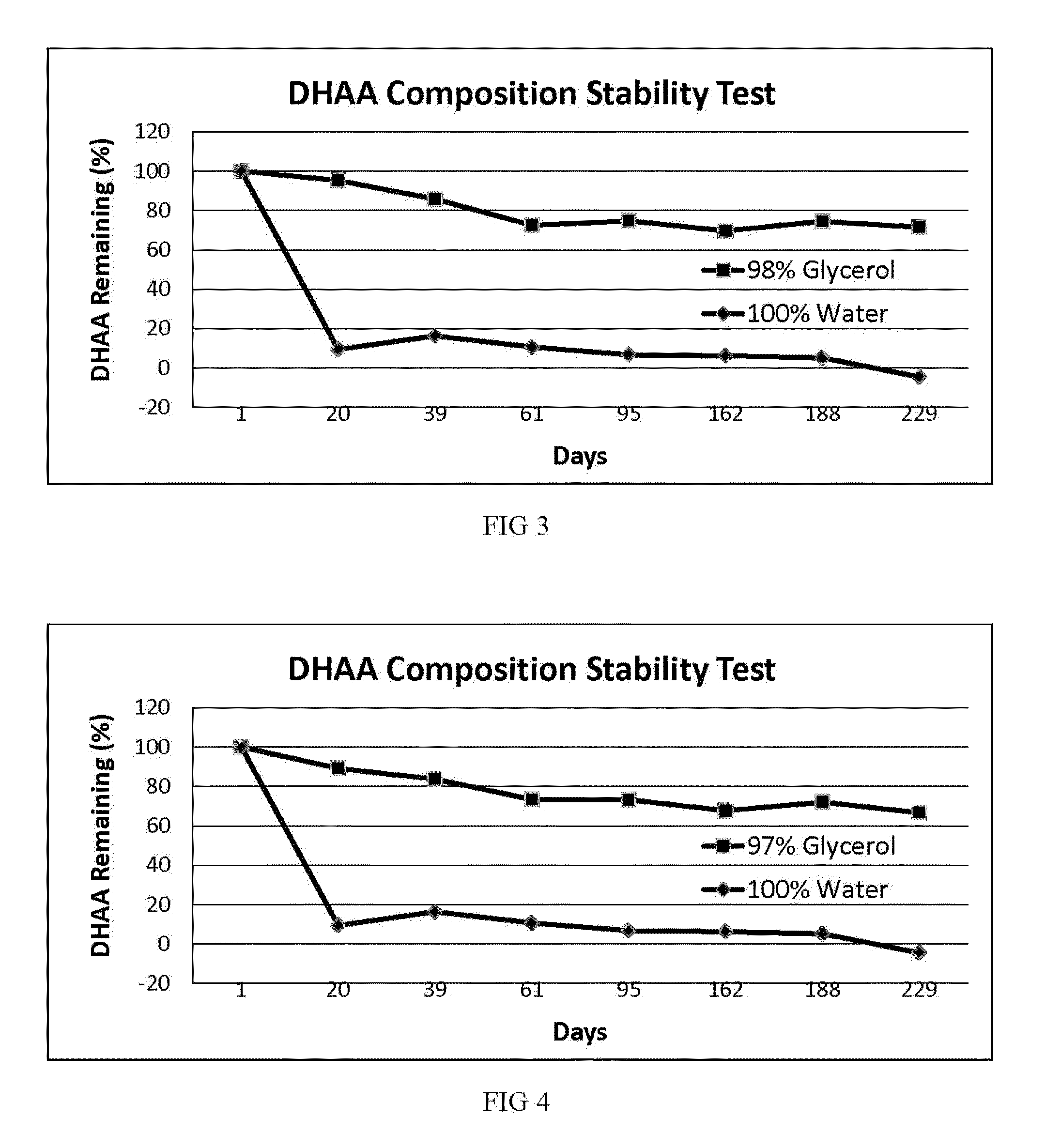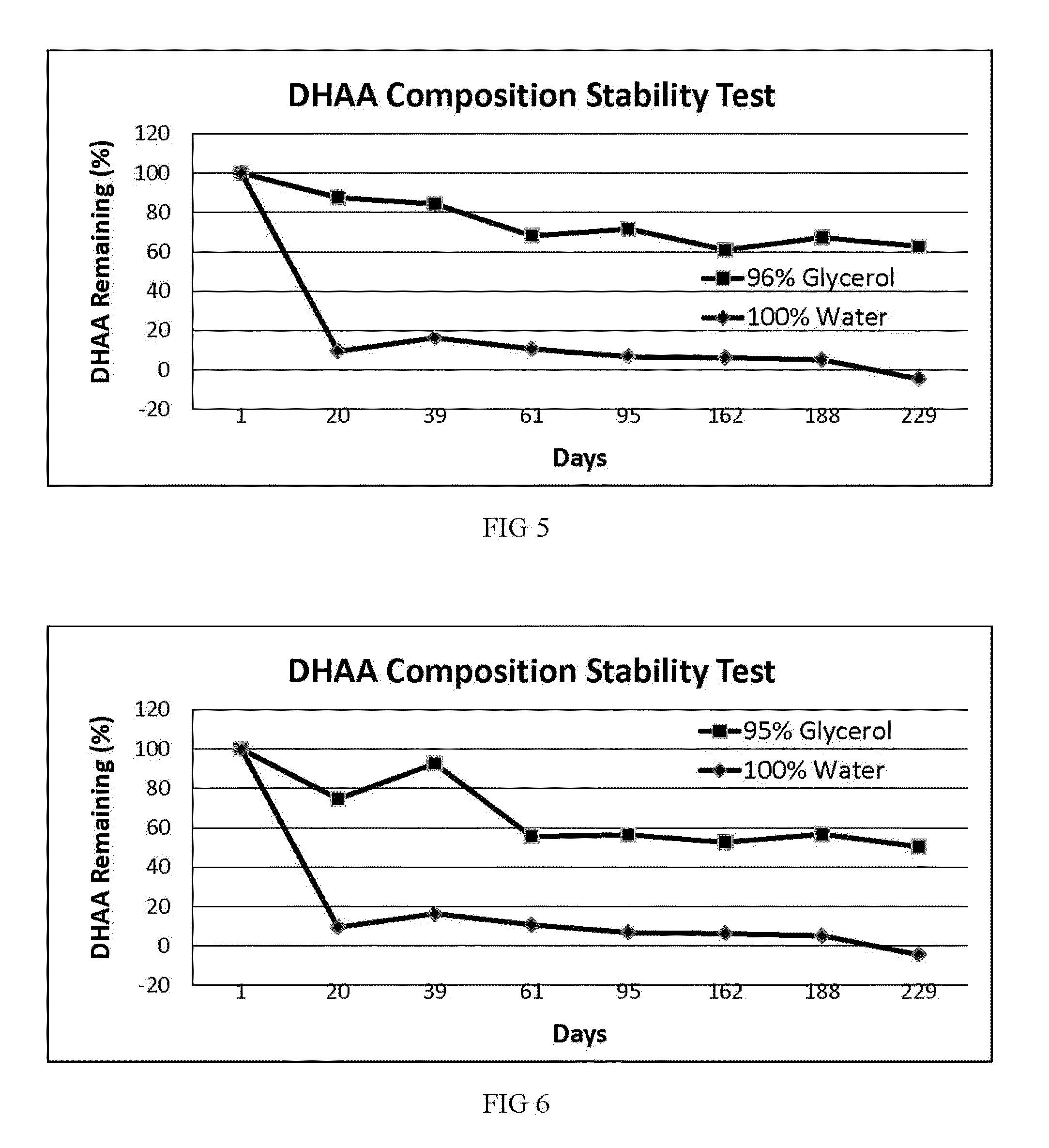Stable compositions of dehydroascorbic acid
a technology of dehydroascorbic acid and composition, which is applied in the field of stable liquid composition, can solve the problems of unstable compounds of aa and dhaa, difficult to manufacture dhaa solutions, and no commercially available dietary or topically applied products
- Summary
- Abstract
- Description
- Claims
- Application Information
AI Technical Summary
Benefits of technology
Problems solved by technology
Method used
Image
Examples
example 2
[0049]In another embodiment, a stable DHAA composition is produced by oxidation of AA dissolved in glycerol using exposure to activated charcoal and oxygen as the oxidation method.
[0050]A solution of AA in pure USP glycerol was subjected to oxidizing conditions by suspending activated charcoal in the solution and then bubbling pure oxygen through the solution. Oxidation of AA during this process was monitored by starch-iodine titration. After the desired amount of AA had been oxidized, the activated charcoal was removed from the solution by centrifugation and filtration. This solution was labeled “100% Glycerol.” A portion of the solution was then placed in a translucent, screw-capped polyethylene vial and was stored at room temperature. No attempt was made to further protect the vial from ambient indoor light, and the vial contained a headspace of normal air. The vial was periodically opened to remove a sample for stability testing over the next 191 days. The concentration of DHAA ...
example 3
[0056]demonstrates that stable DHAA compositions may be prepared using a third alternative oxidation method as compared with the first two examples, and also demonstrates that an alternative polyol solvent can be used.
example 4
[0057]In another embodiment, stable DHAA compositions containing various ratios of AA:DHAA are demonstrated.
[0058]A first solution was prepared containing AA and DHAA in 100% glycerin, wherein the ratio of AA:DHAA was about 1:1, and the actual concentrations of AA and DHAA was about 2.5% by volume respectively. Therefore the total vitamin C concentration in the first solution was about 5%. A second solution was prepared containing only AA in 100% glycerin, and wherein the AA concentration was about 5% by volume. Various proportions of the first solution and the second solution were combined to produce other solutions that each contained a total vitamin C concentration of about 5%, but wherein the ratio of AA:DHAA varied between about 1:1 and about 99:1. More specifically, solutions were prepared that contained AA:DHAA ratios of about 2:1, 5:1, 9:1, 19:1, and 99:1.
[0059]For comparison, a solution was prepared containing AA and DHAA in 100% water, wherein the ratio of AA:DHAA was abou...
PUM
| Property | Measurement | Unit |
|---|---|---|
| temperatures | aaaaa | aaaaa |
| time | aaaaa | aaaaa |
| total weight | aaaaa | aaaaa |
Abstract
Description
Claims
Application Information
 Login to View More
Login to View More - R&D
- Intellectual Property
- Life Sciences
- Materials
- Tech Scout
- Unparalleled Data Quality
- Higher Quality Content
- 60% Fewer Hallucinations
Browse by: Latest US Patents, China's latest patents, Technical Efficacy Thesaurus, Application Domain, Technology Topic, Popular Technical Reports.
© 2025 PatSnap. All rights reserved.Legal|Privacy policy|Modern Slavery Act Transparency Statement|Sitemap|About US| Contact US: help@patsnap.com



